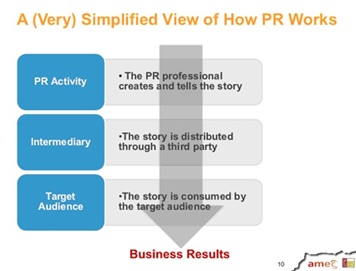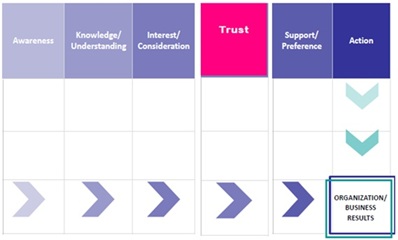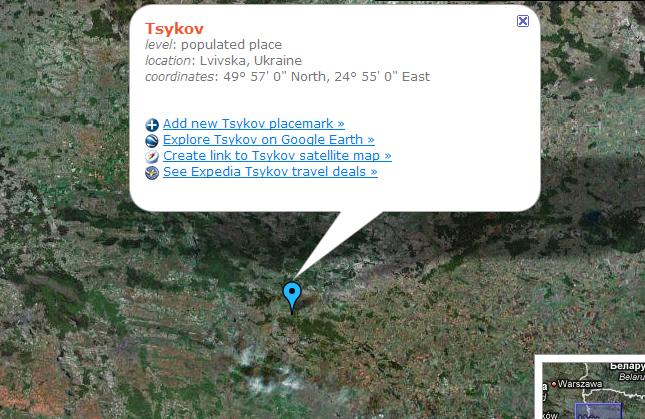| Human-Oriented Approach: Measuring Trust in PR Campaigns (1/5) | http://www.communicationmonitor.eu/ |
| I would like to provide a simple and practical solution as a small example of
implementing a Human-Oriented Approach for PR measurement and PR
management that I have been developing for PR agencies, press offices, election
campaign offices, etc. I present this solution in four main statements.
© Peter Tsykov 2014, all rights reserved
Peter Tsykov, PhD.
President, PT News & Analytics Inc.
Member, Public Relation Society of America
Member, Canadian Ethnic Media Association
|
| Posted by: Human-Oriented Approach | Nov 13, 2014 @ 16:54 |
 | |
| Human-Oriented Approach: Measuring Trust in PR Campaigns (2/5) | http://amecorg.com/downloads/resource/ValidMetricsFramework7June2011PrintVersion.pdf |
 | In the European Communication Monitor 2013 document [1] there was set a
number of the most important issues for communication management
until 2016. One of the high priority issues was ‘Building and maintaining trust’.
But you cannot possibly do this successfully without effective measurement.
Trust is a complex psychological (cognitive and affective) concept which is
difficult to describe. A great academic review particular as it relates to the effective
practice of public relations can be found in the Institute for Public Relations (IPR)
document [2]. Various authors point a great number of characteristics, layers and
even dimensions of the trust (e.g. integrity, dependability, competence). They
consider cognitive-based trust which based on rational thought and affect-based
trust based on the emotional connection of the relationship, and specify two
types of trust: general-attitudinal and specific-situational. All these definitions
increase our understanding of the trust phenomenon but make its measurement
look a daunting task.
I would like to provide a simple and practical solution as a small example of
implementing a human-oriented approach for PR measurement and PR
management that I have been developing for PR agencies, press offices, election
campaign offices, etc. I present this solution in four main statements.
My first statement/assumption is: if you maintain a specific-situational trust in your
every PR campaign you can finally build a general-attitudinal trust to your
organization in the long-term relationship. This is the first preliminary step of
making measurement simpler.
International Association for the Measurement and Evaluation of Communications
(AMEC) suggested the following diagram as a simple view of some PR campaign.
You tell your story or some key message and try to make your target audience
to trust your story or your key message, which are subjects of your PR
campaign. Here you deal with a specific-situational trust. If you gain trust every
time than finally you and your organization become trusted in general, as a result
of long-term relationship. At this point you already deal with general-attitudinal
trust. This diagram also shows that you can build and maintain trust with your
intermediary third party in the same way you do it with your target audience.
|
| Posted by: Human-Oriented Approach | Nov 13, 2014 @ 16:53 |
 | |
| Human-Oriented Approach: Measuring Trust in PR Campaigns (3/5) | http://amecorg.com/downloads/resource/ValidMetricsFramework7June2011PrintVersion.pdf |
 | My second and most important statement is: by implementing a concept of so
called comparative measurement you can avoid many complications of measuring
trust. The idea of comparative measurement can be easily explained in the
following example. It is very difficult (almost impossible) to determine what is the
perfect handwriting. But it is very easy to compare which one of two handwritings
is better.
For PR practice it means that you even don’t have to go deep into the trust
phenomenon. What you need is just to ask respondents from your target
audience which one of two alternatives ‘I trust this message’ or ‘I don’t trust this
message’ is more preferable. You get trust if the first alternative is more preferable
and don’t get trust vice versa. By summarizing answers you get a mutual opinion
of your target audience. You can even measure a level of trust if you set some
score scale and determine a difference in preference between two alternatives.
By using a level of trust you can plan and monitor your PR campaign and
determine whether to continue a PR campaign or to stop it.
Comparative measurement significantly increases measurability of the whole PR
process when you cannot measure human activities in some absolute numbers.
At the same time you can improve your results by combining individual
preferences with statistics collected as a result of various surveys or during social
media monitoring.
My third statement is: to provide better accuracy of measuring trust do it
frequently on regular basis, as you think it is reasonable for your PR campaign.
Thanks to social media you can do measurement constantly and in real time.
If you measure frequently you can further allow yourself to avoid many
complications of measuring trust. The more iterations you do the more precisely
you get to your terminal goal.
Considering Valid Measurement Framework (VMF) [3] of PR campaign, what would
be the right place for Trust in the sequence of communication stages: Awareness,
Understanding, Interest and Support?
And here is my fourth statement: you cannot support without trust, you should
not trust without understanding, and if interest is similar to consideration than
better to consider information before you trust. In the result you get VMF with
one additional communication stage Trust, between Interest and Support stages.
|
| Posted by: Human-Oriented Approach | Nov 13, 2014 @ 16:52 |
 | |
| Human-Oriented Approach: Measuring Trust in PR Campaigns (4/5) | http://amecinternationalsummit.org/wp-content/uploads/2014/06/Breaking-the-PR-Measurement-Deadlock-A-New-Approach-and-Model-Jim-Macnamara.pdf |
| You can easily extend this comparative measurement concept for measuring
other PR communication stages: Awareness, Understanding, Interest and
Support. Just set for comparison the following natural alternatives: ‘I am aware’
and ‘I am not aware’, ‘I understand’ and ‘I don’t understand’, etc.
In future I would also suggest to use a concept ‘Cognitive/Affective State’ instead
of ‘Communication Stage’. It would divert PR practitioners at the very beginning
from measuring outputs to measuring outtakes and outcomes, inspire the search
for more clear human criteria of reaching any given stage of PR communication
and provide more flexibility in setting PR campaign objectives. For example, trust
has its trust counterpart — suspicion. Considering trust counterpart as an
opposite cognitive state you can plan a PR campaign with opposite to trust
goal: i.e. develop suspicion to some idea, project, fact or statement. In this case
you will make measurement by setting preference between alternatives ‘I do
suspect’ and ‘I don’t suspect’.
At the last (June, 2014) International AMEC Summit on Measurement in
Amsterdam Prof. Jim Macnamara [4] drew once again PR community attention to
the human aspects of PR communication and said about PR measurement
deadlock. It is clear that you cannot break the deadlock without making your
metrics more relevant to the subject of research, namely human attitudes,
opinions, motives, intentions, etc. Finally public and target audiences are those
who “evaluate” our PR campaigns.
|
| Posted by: Human-Oriented Approach | Nov 13, 2014 @ 16:51 |
 | |
| Human-Oriented Approach: Measuring Trust in PR Campaigns (5/5) | |
| References
1. European Communication Monitor: http://www.communicationmonitor.eu/
2. Institute for Public Relations:
http://www.instituteforpr.org/trust-and-pr-practice/
3. Valid Metrics Framework:
http://amecorg.com/downloads/resource/
ValidMetricsFramework7June2011PrintVersion.pdf
4. Jim Macnamara, Breaking the PR Measurement and Evaluation Deadlock:
A New Approach and Model.
http://amecinternationalsummit.org/wp-content/uploads/2014/06/Breaking-the-
PR-Measurement-Deadlock-A-New-Approach-and-Model-Jim-Macnamara.pdf
|
| Posted by: Human-Oriented Approach | Nov 13, 2014 @ 16:50 |
 | |
| abc | http:// |
| ddd |
| Posted by: eee | Apr 12, 2014 @ 12:58 |
 | |
| Tsykov town | http://www.maplandia.com/ukraine/lvivska/tsykov-49-57-0-n-24-55-0-e/ |
 | I've found a town in Ukraine called Tsykov
after my grandfather Peter Tsykov (Петр Михайлович Цыков).
|
| Posted by: Peter Tsykov | Nov 02, 2008 @ 21:50 |
 | |